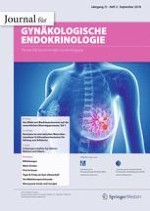12.09.2018 | Originalien
Schwangerschaften bei älteren Müttern und Vätern
Erschienen in: Journal für Gynäkologische Endokrinologie/Schweiz | Ausgabe 3/2018
Einloggen, um Zugang zu erhaltenZusammenfassung
Es gibt ein erhöhtes Risiko für Infertilität, Chromosomenaberrationen, ein schlechteres Ergebnis bei in-vitro-Fertilisierungs(IVF)-Versuchen, Präeklampsie, Diabetes mellitus gravidarum, Placenta praevia, Sectio, Totgeburten, mütterliche intensivstationäre Betreuung und erhöhte mütterliche Mortalität bei Frauen, die eine Schwangerschaft in höhere Altersgruppen verschieben. Die Verlegung des Kinderwunsches in eine höhere Altersgruppe hat hauptsächlich sozioökonomische Gründe, aber auch die vermehrte Inanspruchnahme kontrazeptiver Maßnahmen ist dafür verantwortlich. Bei Eizellenspende steigt ebenfalls die Rate mütterlicher Probleme mit zunehmendem Alter an. Einzig Chromosomenaberrationen werden nur mit dem Alter der Spenderin vergesellschaftet. Auch das väterliche Alter scheint für den Ausgang der Schwangerschaft eine gewaltige Rolle zu spielen. Die vorhandene Literatur zu diesem Thema ist jedoch noch uneinheitlich.
Anzeige
